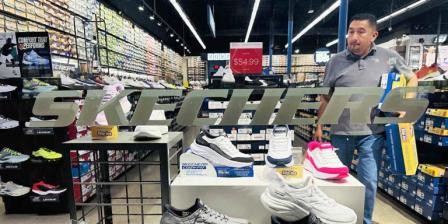Skechers, the global footwear giant, just dropped a bombshell: it’s going private in a $9.4 billion deal with 3G Capital, announced on May 5, 2025. This move, one of the largest in footwear history, comes as the company navigates the choppy waters of a U.S.-China trade war, with President Donald Trump’s 145% tariffs on Chinese goods shaking up the industry. Why now? Let’s dive into this game-changing decision, explore what it means for Skechers, and why it’s got everyone talking.
Skechers’ Big Leap: Why Go Private Now?
The decision to go private is a strategic pivot for Skechers, especially with tariffs squeezing margins. Public companies face relentless pressure to deliver quarterly results, but going private gives Skechers breathing room to plan long-term. The deal, valued at $63 per share—a 30% premium over its recent stock price—sent shares soaring 25% on Monday. With 3G Capital’s backing, Skechers can focus on innovation and global expansion without Wall Street’s glare. CEO Robert Greenberg, who’ll stay at the helm, called it a “transformational partnership” to evolve their lifestyle and performance footwear. But the timing, amidst trade war chaos, raises eyebrows. Is this a defensive crouch or a bold bet on the future?
Trade War Challenges for Skechers
The U.S.-China trade war, escalating with tit-for-tat tariffs, hits Skechers hard. About 38% of its U.S. sales come from China-sourced goods, and the 145% tariff jacks up costs. In April 2025, Skechers yanked its full-year guidance, citing “macroeconomic uncertainty.” CFO John Vandemore compared the tariff chaos to the early COVID days, a time of wild unpredictability. To cope, Skechers is:
- Shifting production: Moving away from China to places like Vietnam, which already accounts for 40% of its sourcing.
- Selective price hikes: Passing some costs to consumers without alienating its value-driven fanbase.
- Cost-sharing: Working with suppliers to spread the tariff burden.
Yet, executives warn of potential kids’ shoe shortages by late 2025 if tariffs persist. Alongside rivals like Nike and Adidas, Skechers urged Trump to exempt footwear from tariffs, warning of job losses and higher prices. So far, no dice.
Skechers’ Private Path: What’s Next?
Going private shields Skechers from market volatility, letting it double down on strengths. In 2024, it raked in a record $9 billion in revenue, with 65% from international markets. China remains a growth hotspot, and Skechers plans to keep investing there despite trade tensions. The deal, set to close in Q3 2025, keeps the Manhattan Beach HQ and Greenberg’s team intact. 3G Capital, known for blockbuster deals, brings deep pockets and global expertise. But risks loom—debt financing from JPMorgan Chase could strain finances if tariffs keep biting. Still, analysts see this as a chance for Skechers to reinvent itself, free from public scrutiny.
Why This Matters to You
If you’re a Skechers fan, this news is more than corporate chess. Prices might creep up as tariffs hit, but the brand’s focus on innovation could mean cooler, comfier kicks. For investors, the 30% stock premium is a win, though some wonder if $63 per share undervalues Skechers’ long-term potential. For the industry, this deal signals a shake-up—other brands may follow suit to dodge trade war fallout. As Trump hints at trade deals with countries like India, the global footwear landscape could shift fast. Skechers’ bold move invites us to watch closely: will it sprint ahead or stumble?
Read Also-Milena Brandão: A Bright Star Lost Too Soon
This isn’t just about sneakers—it’s about a company daring to rewrite its story in turbulent times. Stay tuned as Skechers laces up for its next chapter.
